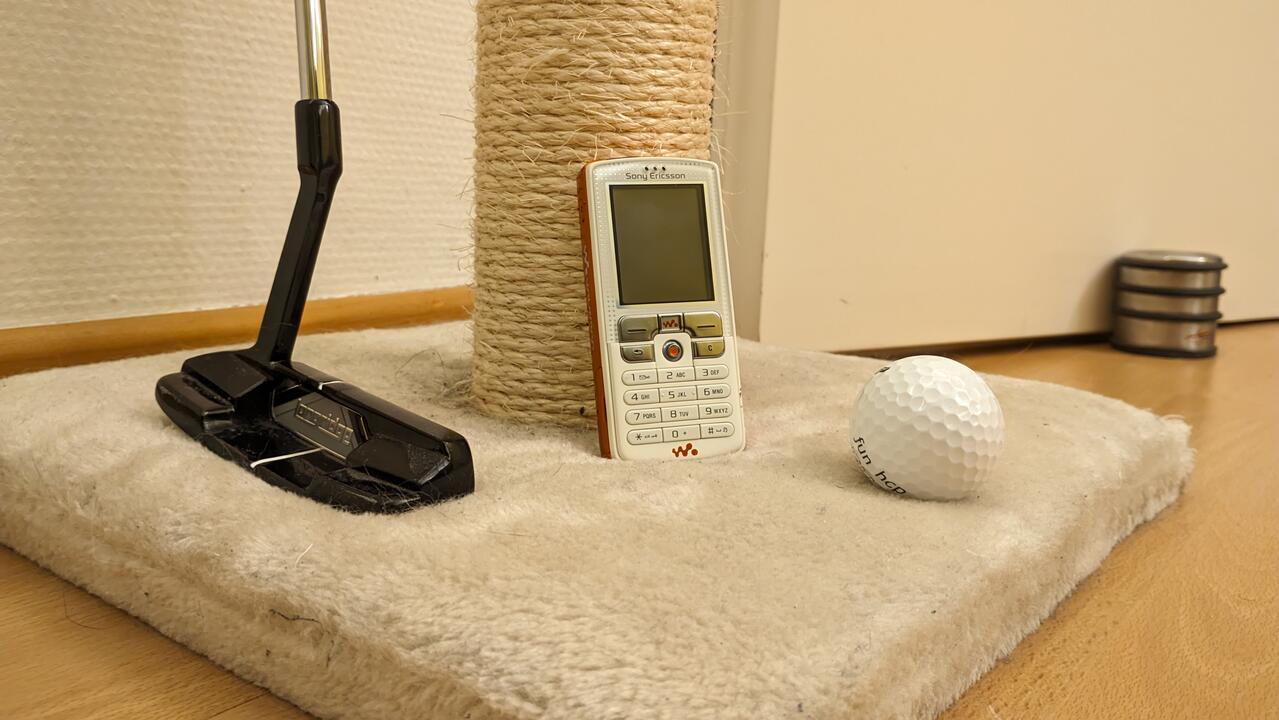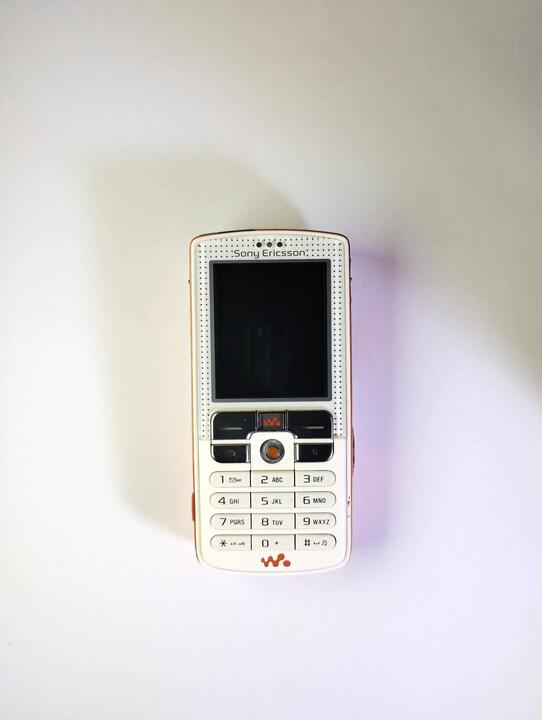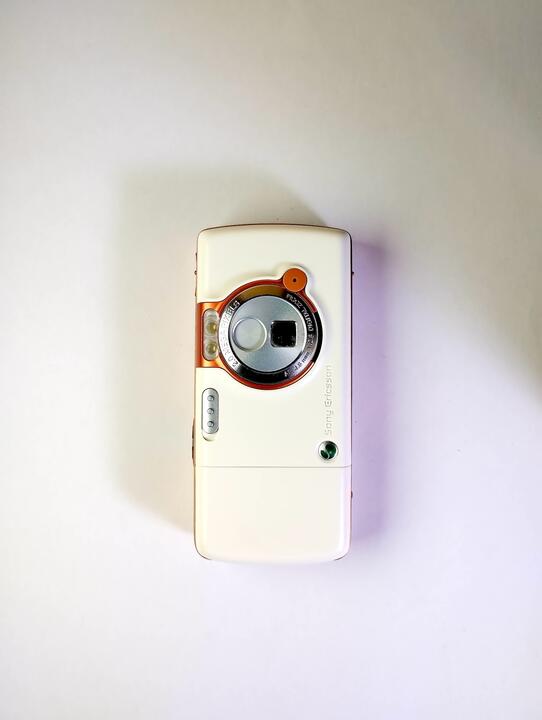Sony Ericsson W800i
Status: 🟢 Fully functional
Specs
- Launch date: 2005
- Software platform: Sony Ericsson proprietary (A100 platform)
- Display: 176 x 220 pixels, 262K colors
- Connectivity: GSM, GPRS, Infrared, Bluetooth 1.1, USB
- Storage: 34 MB internal, Memory Stick PRO Duo up to 2 GB
- Camera: 2 MP with autofocus and LED flash
- Third party apps: Java MIDP 2.0
- Internet: WAP 2.0, xHTML
- Other notable features: Walkman music player, flight mode, stereo FM radio with RDS

“An absolutely incompatible and downright hideous combination of colors,” I thought when I first saw this phone in the hands of my classmate’s friend. Back then, only two people in our entire town had 512-megabyte memory cards, and that was considered an unattainable luxury—just a strange coincidence, as if the stars had aligned. And they had, because the two of us owned brand-new, off-the-shelf music phones: my white Motorola E398, which sold for the same 200 USD as the standard black version but came with a much larger memory card, and the rising star of the mobile world, the Sony Ericsson W800i, which went for 300 USD.
The concept of a music phone was so new that Sony Ericsson decided to go all-in, leveraging its most powerful sub-brand in history. This wasn’t just some random “mobile phone with a built-in MP3 player”—this was a Walkman! No cassette, no CD player—just a phone. Naturally, the whole branding spectacle had to grab potential buyers by the eyeballs and drag them toward the product right from the store shelves. That’s why they packaged it in a transparent, vertical cylindrical blister pack, where both the ivory-colored phone and the bold, orange branding screamed for attention. And that’s exactly what turned me off the most—it reminded me of the childish finger paintings I used to make just ten years prior.
And yet, the Swedish-Japanese device had another ace up its sleeve—one that was just as visible through the blister pack’s visor: the Sony Ericsson HPM-70 “vacuum” earbuds, the very ones with rubber tips that we’ve long since grown accustomed to. This accessory wasn’t just one or two, but three entire levels above anything else on the market at the time. My Motorola’s stock “hammer” earbuds were absolute garbage compared to the HPM-70s. SE also introduced two other engineering innovations: an asymmetrical cable with an extended right earbud (surprisingly convenient—I later made a similar mod for my IEMs) and an adapter with a standard headphone jack, allowing users to plug in any headset instead of the bundled HPM-70. No one could compete with that—Nokia only started offering something similar in its multimedia phone series in 2006.
As was common back then, the W800i had a twin sibling—the K750i—designed for a more serious, business-like crowd. The best part? The K750i could be easily flashed with the W800i firmware, essentially turning it into a Walkman phone, just without the branding. Whether this actually improved music playback is unclear. Maybe it enabled the MegaBass equalizer, or maybe all that branding was just an empty gimmick. But one thing was certain: the “music phone” was now its own category, and for the next six short years, manufacturers would fiercely compete in this new space.
🇺🇦 HELP US HELP OTHERS, SAVE ANIMALS IN UKRAINE
Site map | Powered by crew | © 2025 TiredSysadmin
All photos from Vintage Cellphone and PDA Museum by TiredSysadmin are licensed under Creative Commons Attribution-NonCommercial-ShareAlike 4.0 International.

